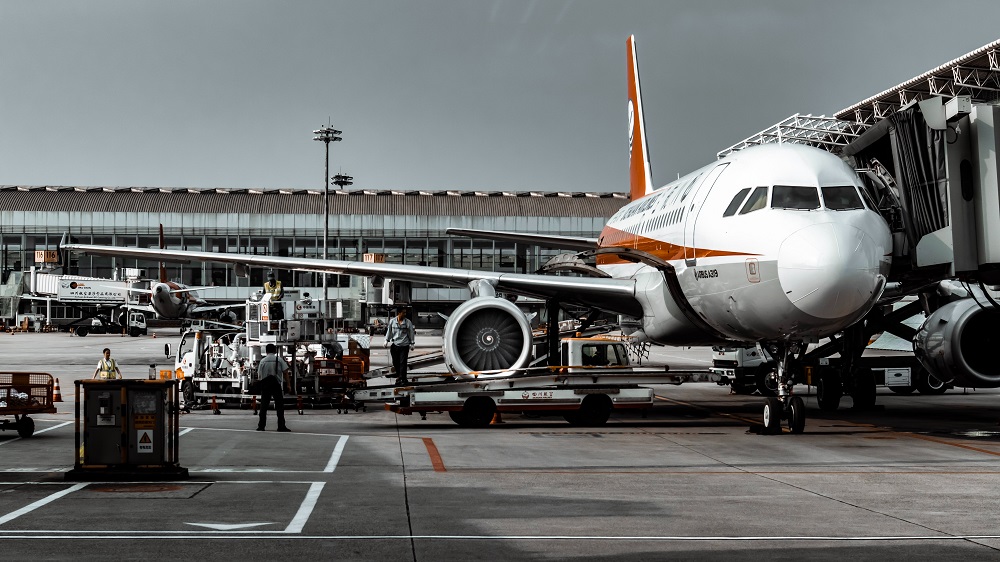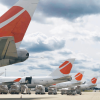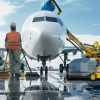 Back in the days of the golden era of aviation, where iconic jumbo jets and sleek, cutting-edge models dominated the skies, airlines took pride in their state-of-the-art fleets, symbolizing the pinnacle of technological achievement. Yet, as time marches on, these once-mighty aircraft are showing signs of age, posing a unique set of challenges for the industry.
Back in the days of the golden era of aviation, where iconic jumbo jets and sleek, cutting-edge models dominated the skies, airlines took pride in their state-of-the-art fleets, symbolizing the pinnacle of technological achievement. Yet, as time marches on, these once-mighty aircraft are showing signs of age, posing a unique set of challenges for the industry.
Yet, as commercial transportation enters its second age, a rare aircraft is still operating for at least a third of this time. If you ask any airline representative familiar with the matter of aging fleets firsthand, you will undoubtedly hear that the first signs of trouble emerge as maintenance issues become more prevalent.
As currently there is over 30,000 commercial aircraft in operation worldwide. Of these, over 10,000 were over 20 years old. The average maintenance cost for a commercial aircraft is $1 million per year, and the older aircraft gets, the higher such cost becomes. In the last year alone, when airlines were still in the early stages of recovering from the global pandemic-related crisis, they lost over $10 billion due to maintenance and repair issues. This number is expected to grow in the coming years.
Aging aircraft demand increased attention, resulting in unexpected downtime and soaring operational costs. 'The challenges of managing aging fleets are evident,' says Toma Matutyte, the CEO of Locatory.com, one of the fastest-growing online aviation marketplaces. 'Industry experts tend to reveal the economic repercussions, forcing airlines to confront difficult decisions regarding the management of their aging fleets.'
Balancing the Past and the Future
'Airlines find themselves in a race against time to extend the life of their aging aircraft. Heavy investments in maintenance programs and technology upgrades become paramount,' continues Matutyte. 'Engineers and aviation experts work tirelessly to address safety concerns without breaking the bank.'
The narrative unfolds as carriers navigate the delicate balance between preserving the past and embracing the future. One of the main and arguably most obvious obstacles in the path for the airline growth is the backlog of aircraft orders.
As air carriers battle the issue of the aging fleet, they are virtually as much competitive as they are efficient. Yet being an air carrier means doing extremely competitive business, meaning that there is no room for nostalgia if it doesn’t pay the way it could.
Of course, every carrier is constantly searching for the new channels to get the inventory it needs on the best terms possible. As of today, there are mainly five top channels to get such inventory.
1. Direct purchases from manufacturers
Airlines can place direct orders with aircraft manufacturers like Boeing, Airbus, or any other aircraft producer. This involves buying brand new aircraft with the latest technology and specifications. Such an approach offers several additional benefits, such as tailor-made aircraft configurations to meet specific operational requirements and long-term warranties and maintenance support, as well as potential for bulk discounts and financing options.
2. Leasing companies
Airlines often lease aircraft from specialized leasing companies. Leasing provides flexibility, allowing carriers to update their fleet without committing to the full purchase cost. Leasing also helps in managing the age profile of the fleet effectively while mitigating risks associated with obsolescence and technology advancements.
3. Inventory acquisition
Such move can be done not only when merging with other legal entity through business acquisitions but also through joint ventures or partnerships. Collaborating with other airlines, aircraft operators or leasing companies can provide access to a wide range of different aircraft resources and expertise. Such joint ventures or partnerships may involve co-owning or jointly operating aircraft to share costs and optimize fleet utilization.
4. Aviation aftermarket services providers
Airlines may explore aftermarket services to purchase used aircraft or parts. This can be a cost-effective option, especially for older models. However, careful inspection and maintenance considerations are crucial when buying used aircraft, parts, or equipment.
5. Online Marketplaces
Online marketplaces like Locatory.com have transformed the aviation industry, providing a centralized platform for airlines to procure a wide range of assets and services. Such marketplaces offer a comprehensive solution for airlines to acquire and manage their aviation inventory. Such platforms presently offer advanced search filters to locate specific parts efficiently.
That way airlines can also access a comprehensive selection of aviation consumables, including fluids and chemicals, as well as ground support equipment. Such platforms aim to simplify procurement and inventory management of essential consumables.
Material Support in New Bases Through Leveraging of Available Tools
Online marketplaces connect airlines and other clients with a wide range of aviation services providers, offering access to MROs, engineering support, and other specialized solutions. In addition to that, Locatory.com facilitates rapid procurement of critical parts and components to minimize AOG downtime. The platform's real-time inventory visibility and expedited delivery options ensure swift resolution of AOG situations.
Online marketplaces such as Locatory.com are also ready to help with any material support in new bases as they provide airlines with crucial insights into spare parts requirements and sourcing strategies for their new bases. This tool leverages vast data of the marketplace on spare parts location and availability to help airlines optimize their spare parts inventory levels, minimize disruptions, and achieve significant cost savings.





